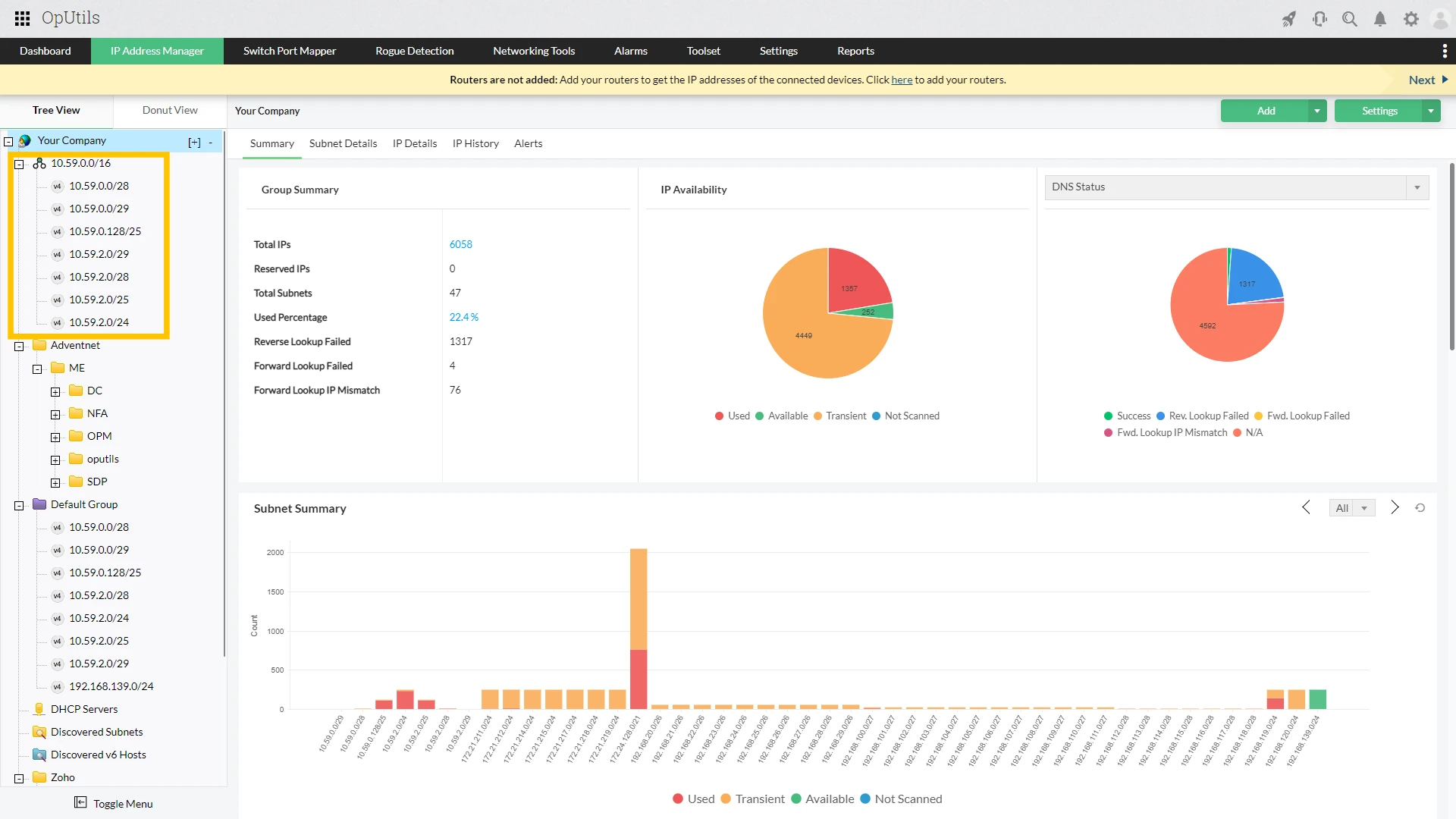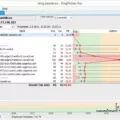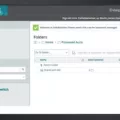Supernetting is an important tool for network administrators and engineers looking to maximize their network efficiency and performance. It allows them to combine multiple subnets into a single, larger “supernet”, enabling more efficient routing of packets and better utilization of IP address space. In this blog post, we’ll be discussing the basics of super netting, as well as its advantages and disadvantages.
At its core, supernetting works by taking multiple subnets with similar network prefixes and combining them into one Supernetwork. For example, let’s say you have four /24 subnets (192.168.1.0/24, 192.168.2.0/24, 192.168.3.0/24, and 192.168.4.0/24). You could combine them into a single /22 subnet (192.168.0.0/22), thus making them part of the same supernet or supernetwork range (192-168-0-0 – 192-168-3-255).
The main advantage of super netting is its ability to reduce routing table size by combining multiple routes into one route entry pointing to the Supernetwork range instead of individual networks or hosts within the range. This effectively reduces the number of routes in your router’s forwarding table and can help improve network performance through decreased packet latency times since fewer hops are required for data transmission between destinations on different networks within the same Supernetwork range. Supernetting also helps conserve IP address space since multiple networks can be combined into one Supernetwork range without losing any IP addresses in the process.
However, there are some drawbacks to using super netting that must be taken into consideration when deciding whether or not it is right for your network infrastructure. One such disadvantage is that it can make troubleshooting more difficult since all traffic from within the Supernetwork range will point to the same route entry in your router’s forwarding table making it harder to pinpoint where exactly an issue may be occurring. Additionally, if you need to expand or contract your Supernetwork range at a later date then you may need to renumber all devices within that range which could prove time-consuming depending on how many devices are affected.
Overall though, supernetting can provide numerous benefits for those looking for a way to optimize their network performance and save on precious IP address space. Provided you understand how it works and its potential drawbacks, implementing this technology could prove beneficial for your organization in the long run.

Uses of Supernetting
Supernetting is a routing technique used by network administrators to reduce the size of routing tables and improve the efficiency of IP networks. It involves combining multiple IP subnets into a single supernet, which reduces the number of entries in a routing table by combining similar network prefixes into one entry. This helps reduce the amount of traffic used for routing decisions and can improve overall network performance. Supernetting can also be used to reduce the number of hops taken to reach a destination, as well as increase available bandwidth on certain links.
Difference Between Supernetting and Subnetting
Subnetting is the process of dividing a network into smaller sub-networks, known as subnets. This allows for more efficient use of IP address space and better control over network traffic. Subnets are created by taking existing IP addresses and dividing them into two or more segments. Each segment then has its own unique set of IP addresses.
Supernetting, on the other hand, is the process of combining multiple small networks into one large network. This is done by taking several subnets and assigning them a single IP address range. The result is a single large supernet that can contain multiple smaller networks within it. Supernetting allows for more efficient use of IP address space and better control over network traffic by allowing multiple small networks to be grouped together under one common umbrella.
What is Supernetting IP Addresses?
Supernetting IP addresses is a way of aggregating multiple IP address blocks into a single route announcement. This is done by using CIDR (Classless Inter-Domain Routing) notation, which allows a network administrator to assign a single IP address block to represent multiple smaller blocks of addresses. For example, an administrator could use the network prefix 192.168.0.0/24 to denote all 256 addresses in the range 192.168.0.0 – 192.168.0.255 as one block, instead of announcing each individual address separately in the routing table. This helps to reduce the size of routing tables and makes it easier to manage complex networks with many addresses and subnets. Supernetting also provides better security and reduces the chances of malicious attacks on networks, as it makes it harder for attackers to identify all available IP addresses in a given network range.
What Is Supernetting and What Is an Example of It?
Supernetting is a technique used in IP networking to reduce the size of routing tables and optimize network performance. It combines multiple network addresses into a single route and reduces the number of entries in the routing table. For example, let’s say we have 8 separate routes pointing to the same next hop: 192.168.1.0/24, 192.168.2.0/24, 192.168.3.0/24, 192.168.4.0/24, 192.168.5.0/24, 192.168.6.0/24, 192
Creating a Supernet
To create a supernet, you’ll need to use an IP Address Manager. First, open the IP Address Manager and select the network, supernet, or group to which you want to add the supernet. Then click Add > Supernet. You’ll then be prompted to enter a name for your subnet and the supernet address as well as the CIDR prefix length. After that is done, click Save to apply your changes. That’s it! You have now successfully created a supernet.
Comparing VLANs and Subnetting
In general, VLANs are considered to be a better option than subnetting when it comes to security and control of the network. VLANs allow for more robust control by allowing separate virtual networks to exist on the same physical hardware, while also providing higher levels of security. With VLANs, each device can be assigned to a specific VLAN, ensuring that only authorized users can access certain resources and data.
Subnetting is more limited in its control capabilities, as it mainly works by breaking up a single large network into smaller subnetworks. This type of network has limited security measures available which make it less secure than using VLANs. Additionally, subnetting requires more manual configuration in order to set up the necessary rules and configurations for the network.
if you are looking for higher levels of control and security within your network then VLANs are generally considered the better option compared to subnetting.
Classes of Subnetting
The five classes of subnetting are Class A, Class B, Class C, Class D, and Class E. Each class relates to a specific range of IP addresses.
Class A networks are in the range of 0.0.0.0 to 127.255.255.255 and have 24 bits for the network address and 8 bits for the host address. This allows for up to 16,777,216 unique IP addresses in a single network.
Class B networks have a range of 128.0.0.0 to 191.255.255.255 and have 16 bits for the network address and 16 bits for the host address, allowing up to 65,536 unique IP addresses in a single network.
Class C networks are in the range 192.0.0.0 to 223 .255 . 255 . 255 and have 8 bits for the network address and 24 bits for the host address, allowing up to 254 unique IP addresses in a single network.
Class D networks are used for multicasting purposes only and are in the range of 224. 0 . 0 . 0 to 239 . 255 . 255 . 255 . They do not use any host addressing components as these networks are used only for sending packets from one source to multiple destinations simultaneously within a single local area or wide area network (WAN).
Finally, Class E networks are reserved solely for research purposes only and have an IP address range of 240. 0 . 0 . 0 – 255 . 255 . 255 . 254 with no assigned host address component as they exist outside normal internetworking parameters altogether.
Conclusion
In conclusion, Supernetting is an efficient addressing scheme for the Internet that is used to replace the old classful address scheme. It allows for a more efficient allocation of IP addresses and uses routing aggregation to reduce the number of entries in a routing table. Supernetting is mainly used in Route Summarization, where routes to multiple networks with similar network prefixes are combined into a single entry pointing to a Super Network encompassing all the networks. Subnetting is the procedure to divide a network into smaller sub-networks while supernetting is the procedure to combine these small networks into larger ones. By using supernetting, organizations can reduce their IP address usage and optimize their routing tables for better performance.








